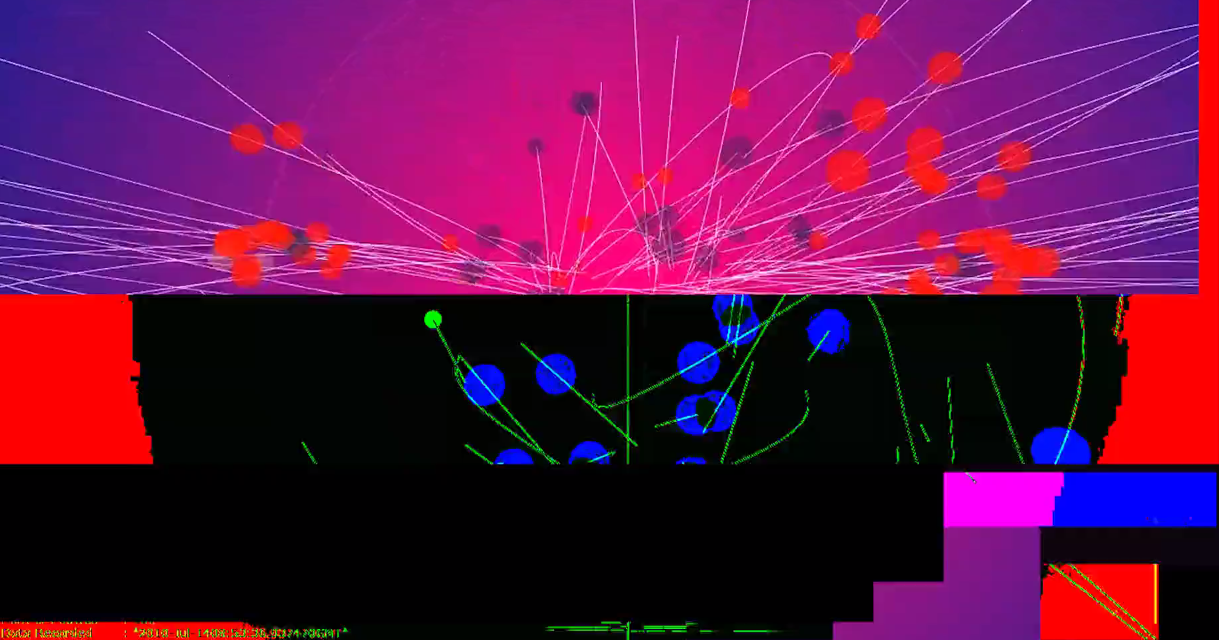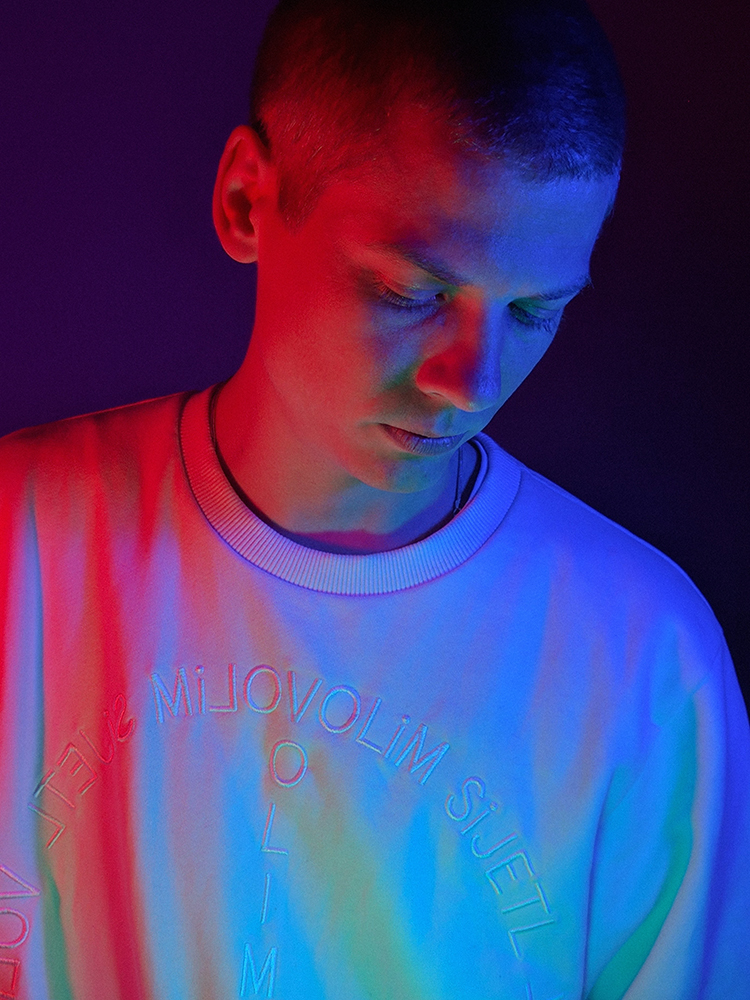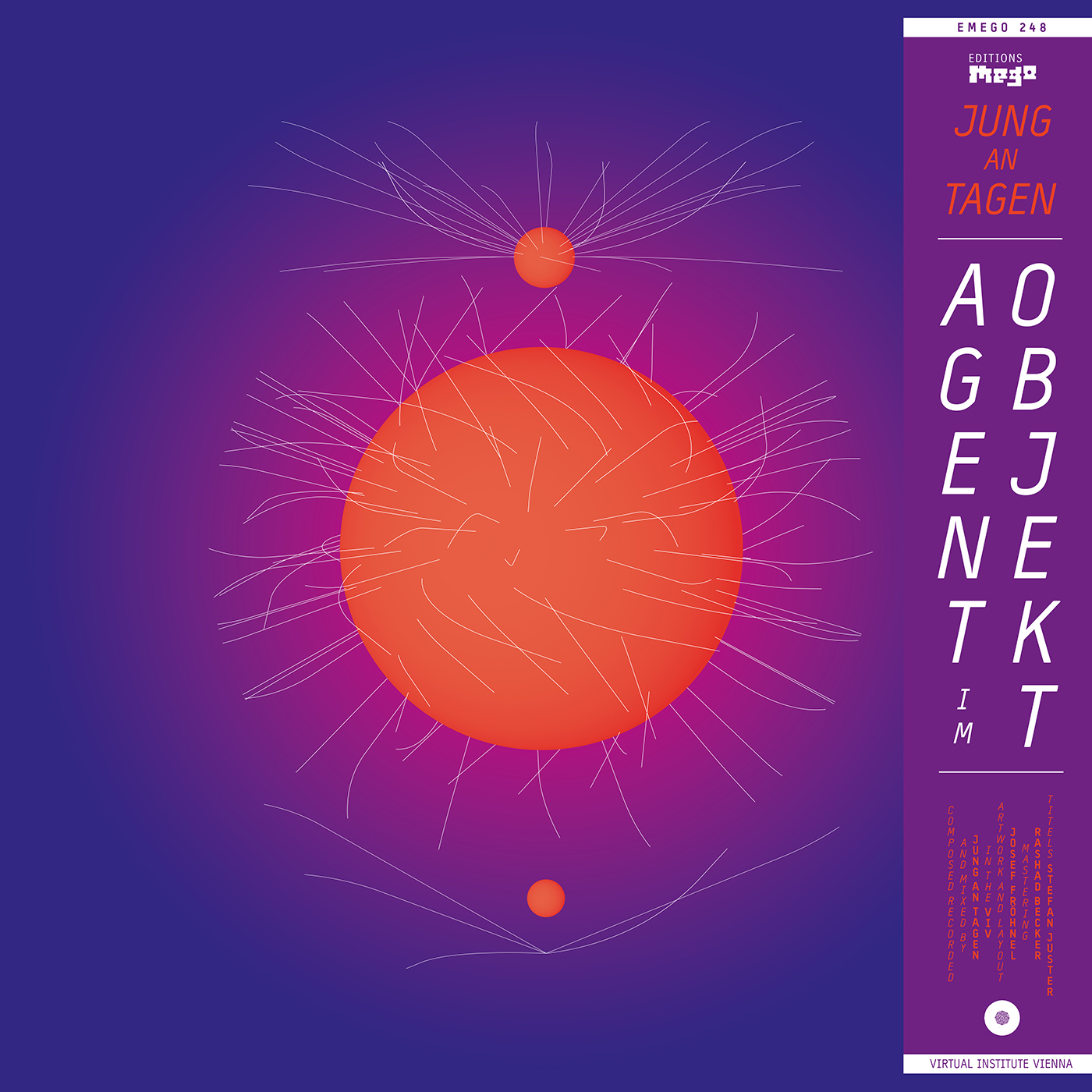Physical terms like gravitation and scale play an important role for Jung An Tagen’s music, as Stefan Juster—the man behind the alias—tells us. They also find their way back into the projects visual language.
„Lately I developed an interest in the aesthetics of scientific visualisations. I like how we translate them. By accident I came across the work of Jeong-Ho Park and asked him if he could tweak a previous work of CERN visualizations of him to my needs (there is huge archive of that data online). Once I had access to that material, the video did basically cut itself. I was also working at that time with flicker film techniques, and wanted to apply this thing I call ’complimentary stroboscope’: A pink/green sequence that triggers all kinds of colours when you look at it. Then, Scott Sinclair, who I worked with a lot in the past, glitched the video to give it more depth.”
The video for „20:03 [Y] HOW IS THAT POSSIBLE?” almost seems to trigger a seizure for the viewer. However, the hallucinatory effect it induces is not an end in itself. Rather, the idea to work with these effects originates from a broader interest in synaesthesia that Juster also follows with the research group „Virtual Institute Vienna” (VIV). And while music may be his main medium, Jung An Tagen as well as the VIV are conceptualized as interdisciplinary projects.
„At one point in my life I decided that doing music is the most fun for a lot of reasons. You are always instantly connected to counterculture and with that to the most interesting people everywhere. Furthermore, you can communicate very directly with your audience which is very rewarding. Making money is not easy but doable. However, I still really like doing visual arts and to play with words while the music is my vehicle. And as far as the linkage of musical and visual elements go, I cannot help myself but think them together. I grew up with MTV: A video, the cover and titles of an album had always the same weight for me as the music itself. During specific phases—usually during the making of an album—it’s really exciting for me to think about colour combinations, forms and text in relation to sound and how they interact for myself. The effects that I hope to achieve (like the research into synaesthesia) are the same like in every other art I guess—I just hope to be more precise with this approach eventually.”
The video is also related to Juster’s studies of experimental cinema—it takes Peter Kubelkas 1960 shortmovie Arnulf Rainer as a starting point—and club culture adds yet another layer to it.
„I always had a thing for heavy psychedelic art. In all kinds of mediums. Club culture uses similar effects—like the strobes—in a different context. The music that I do has the ability to work in different setups, but it was always most important to me that that it works in a counterculture and in techno scenes. Mainly because the audience is the most open for radical concepts and has a tendency to engage with it in a playful way. However, also playing in a seated concert situation for example can be very powerful.”
So far, Jung An Tagen’s live-shows happened in complete darkness while the audience only imagined forms and colours in the best case. This is about to change, as Juster prepares the CERN video material for a live AV-show at this years Hyperreality festival[1] in Vienna. But you don’t have to wait until mid May as we’re premiering the video for „20:03 [Y] HOW IS THAT POSSIBLE?“ right here:
Jung An Tagen‘s LP Agent Im Objekt featuring «20:03 [Y] HOW IS THAT POSSIBLE?» is out via Editions Mego. An interview with label owner Peter Rehberg will be published in the upcoming issue of zweikommasieben.
[1] cf. the interview with Hyperreality curator Marlene Engel in zweikommasieben #15.


